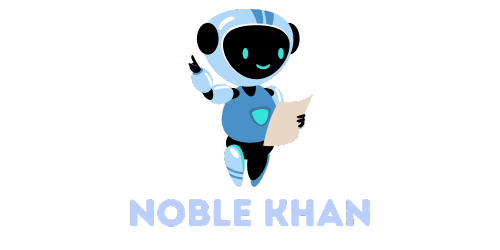In the fast-paced world of software development, ideas are like popcorn—popping up everywhere but often falling flat if not given the right attention. Enter software prototyping: the secret sauce that turns vague concepts into tangible products. It’s the magic wand that lets developers and stakeholders see, touch, and interact with their ideas before diving into the deep end of coding.
Imagine trying to cook a gourmet meal without tasting the ingredients first. That’s what building software without a prototype feels like. Prototyping not only saves time and resources but also helps avoid those cringe-worthy moments when a project goes completely off the rails. So, buckle up as we explore the ins and outs of software prototyping, and discover how it can transform those brilliant ideas into a deliciously successful reality.
Table of Contents
ToggleOverview of Software Prototyping
Software prototyping serves as an essential phase in the software development life cycle. This approach allows developers to create preliminary versions of applications, providing a tangible representation of ideas. Stakeholders can interact with these prototypes, giving valuable feedback before the coding process starts.
Several types of prototypes exist, each offering unique advantages. Low-fidelity prototypes, such as sketches and wireframes, enable quick visualization of concepts. High-fidelity prototypes include interactive elements, resembling the final product more closely. Such fidelity enhances user testing and feedback collection.
Prototyping streamlines communication between teams and stakeholders. This phase facilitates clearer discussions and sets expectations early in the project. Problems and misunderstandings often surface sooner in the prototyping phase, saving time and resources later in development.
Rapid iterations characterize the prototyping process. Feedback from users leads to immediate adjustments, refining the application based on real-world input. Continuous collaboration with stakeholders ensures that the evolving prototype meets project requirements.
Investing time in prototyping pays off in various ways. It reduces the risk of costly revisions after coding begins. Additionally, refined prototypes help teams gain confidence in their solutions, leading to successful product launches. The overall impact of effective prototyping enhances project outcomes, making it a vital practice in software development.
Types of Software Prototyping

Software prototyping includes various approaches that cater to different project needs. Each type serves a specific purpose in understanding and validating concepts during development.
Throwaway Prototyping
Throwaway prototyping creates a model to explore ideas without intending it to be part of the final product. This method allows teams to experiment with features and gather feedback quickly. Once the initial prototype serves its purpose, developers discard it and focus on constructing the actual software. Rapid iteration characterizes this process, enabling quick adjustments based on stakeholder input. Teams avoid wasting resources by refining concepts early, ensuring clarity before extensive coding begins.
Evolutionary Prototyping
Evolutionary prototyping emphasizes continuous improvement and incremental development. In this approach, a prototype gradually evolves into the final product through repeated user feedback and iterations. This method promotes collaboration between users and developers, making adjustments and enhancements easier to implement over time. Each version refines user experience, leading to a more polished end product. Stakeholders contribute valuable insights throughout the process, ensuring the software aligns closely with their needs and expectations. Communication remains fluid, reducing the potential for misalignment later in development.
Benefits of Software Prototyping
Software prototyping offers numerous advantages that significantly improve the development process.
Enhanced User Feedback
Enhanced user feedback occurs during prototyping phases, where stakeholders interact with preliminary versions of applications. Users can express preferences, identify pain points, and suggest improvements. Developers gain valuable insights into user expectations and needs. Addressing feedback early reduces the likelihood of costly changes later, ensuring alignment with user requirements. Iterative adjustments based on direct user input result in a final product that closely matches expectations, ultimately leading to higher satisfaction levels.
Improved Concept Visualization
Improved concept visualization happens when developers create tangible representations of ideas through prototypes. These visual tools enable stakeholders to grasp functionality and design aspects quickly. Different fidelity levels help showcase concepts effectively. Low-fidelity options like sketches provide rough ideas, while high-fidelity versions illustrate near-final products. Early visualization aids in identifying potential issues, streamlining communication among teams. Clearer understanding fosters discussions, setting realistic goals and expectations for the project.
Challenges in Software Prototyping
Software prototyping presents several challenges that can impact the development process. Understanding these challenges helps stakeholders prepare and devise effective strategies.
Time Constraints
Time constraints often pose significant challenges during prototyping. Rapid development cycles may limit the time available for creating and refining prototypes. Limited time can reduce the quality of user feedback and lead to inadequately tested concepts. Stakeholders may feel pressured to make quick decisions, resulting in less informed choices. Balancing speed with thoroughness becomes critical. Teams that allocate time for comprehensive iterations benefit from gradual improvements that align with stakeholder needs. Early engagement in the prototyping process often proves beneficial, allowing teams to identify issues before they escalate.
Requirement Changes
Requirement changes frequently occur during the prototyping phase, complicating the development process. Stakeholders may realize new needs or preferences after seeing initial prototypes. Adapting to these changes can disrupt established plans and timelines. Frequent adjustments require agile responses from development teams. Maintaining clear communication with stakeholders helps mitigate confusion. Iterative feedback loops enable teams to accommodate evolving requirements without derailing the project. Staying flexible and responsive to changes ultimately enhances the final outcome, ensuring the product meets user expectations.
Best Practices for Effective Prototyping
Effective software prototyping hinges on key practices that enhance development outcomes. Prioritizing engagement with stakeholders and embracing iterative development proves crucial for success.
Involving Stakeholders
Involvement of stakeholders ensures that prototypes align with user needs. Engaging them early and regularly facilitates clear communication and immediate feedback. Gathering insights from various stakeholders creates a more comprehensive understanding of requirements. Using surveys or interviews during the prototyping stage can elicit valuable opinions. Visual aids like wireframes or mockups serve as interactive tools, enabling stakeholders to express preferences and concerns. Feedback from different perspectives helps identify potential pitfalls before extensive coding. Listening closely to user input can lead to adjustments that reflect actual needs, increasing the likelihood of project success.
Iterative Development
Iterative development fosters continuous improvement in prototypes. Testing prototypes in cycles allows for quick adjustments based on user feedback. Each iteration encourages teams to refine features and enhance usability. Frequent revisions build a final product that better meets stakeholder expectations. Teams benefit from setting short timelines for prototype testing, ensuring they remain agile and responsive. Collecting user experiences on each iteration highlights pain points and areas for enhancement. This adaptive process supports collaboration, ultimately aligning the prototype with user journeys. Adopting an iterative approach creates a foundation for successful software that evolves alongside user needs.
Software prototyping stands as an indispensable element in the software development journey. By enabling early visualization and interaction with concepts, it significantly enhances stakeholder engagement and feedback. This iterative process not only fosters collaboration but also ensures that the final product aligns closely with user expectations.
Embracing prototyping can mitigate risks associated with costly revisions later in development. As teams navigate the complexities of changing requirements and time constraints, maintaining flexibility and open communication remains crucial. Ultimately, effective prototyping leads to a more refined product and a smoother path to successful launches. Investing in this practice is a strategic move that pays dividends in project outcomes.

